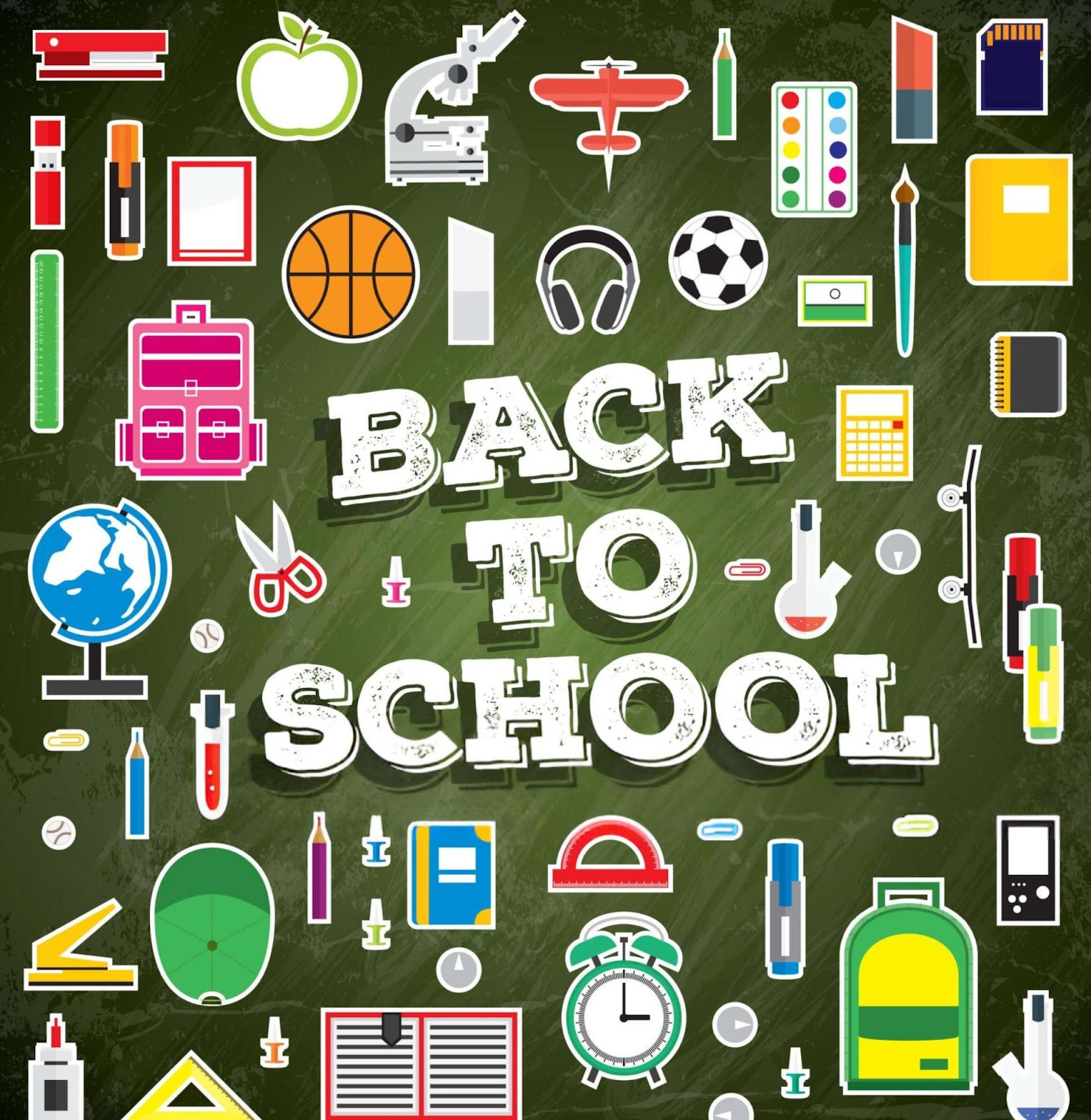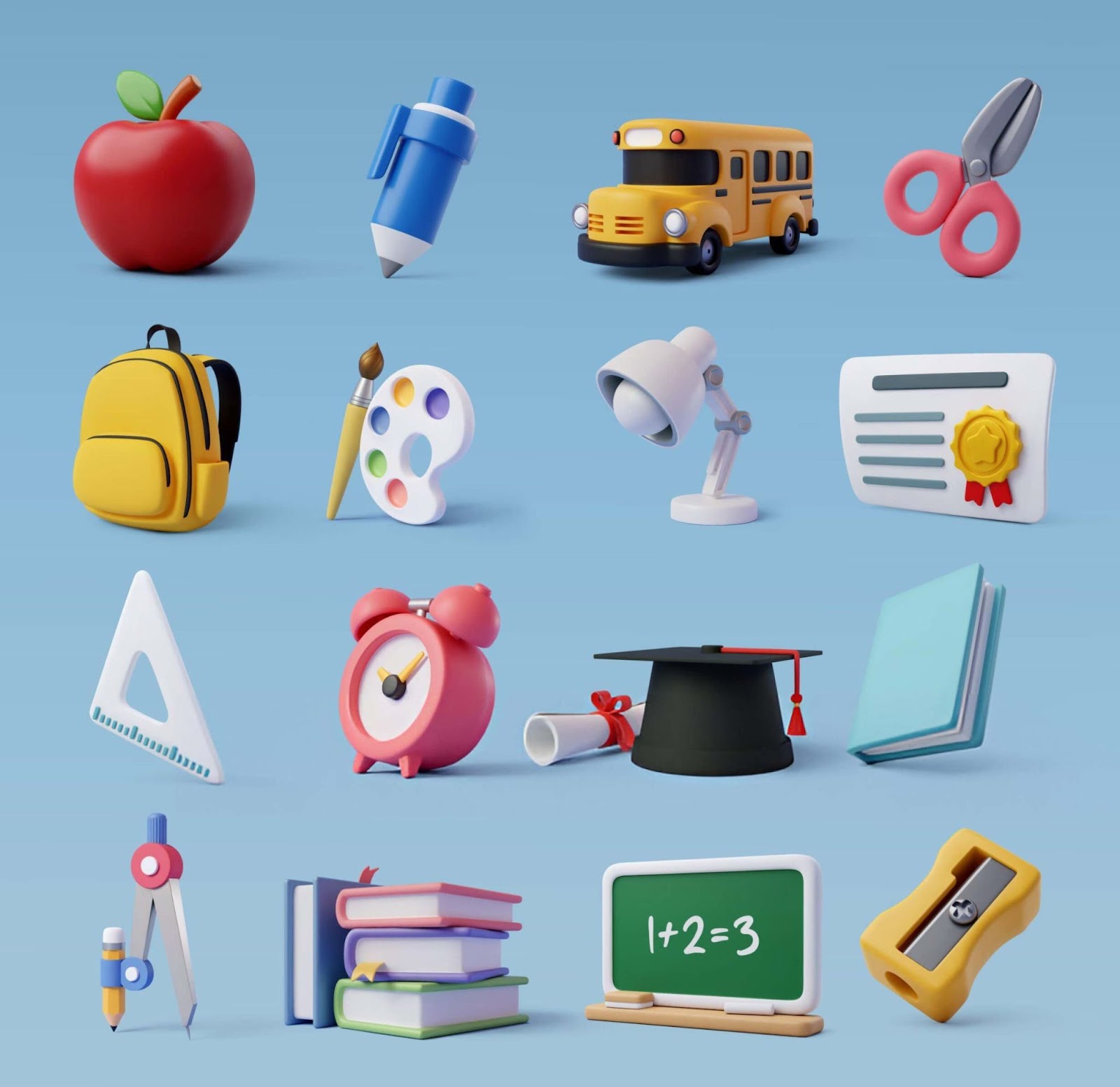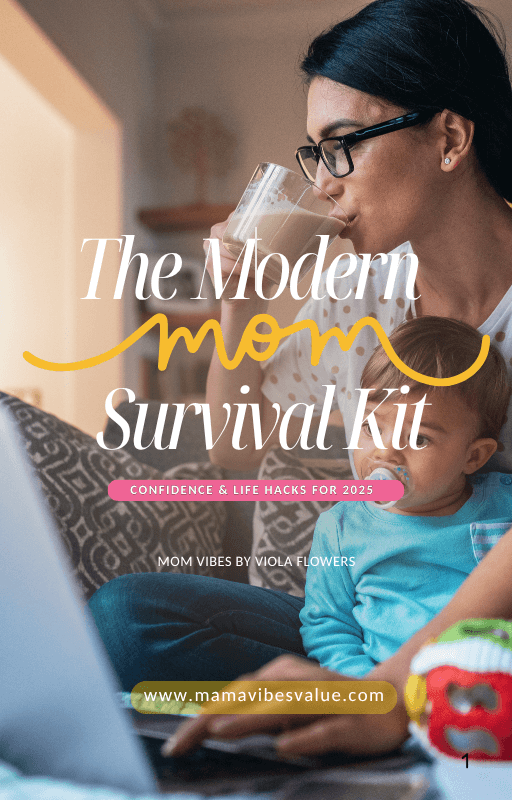Do you smell it? That clean smell of new notebooks, the pleasurable sound of new pens, and the anticipation which fills the air when back to school comes?
The back to school season is an exquisite piece of music, a masterpiece of anticipation, hope and the organized chaos that every parent is only too familiar with. It is that time of the year when the lazy summer days are gone, replaced by the rigid schedules, and your little ones turn back to the eager learners after becoming the beach-loving adventurers.
You may have been there, done that, and lived through several back to school seasons as a parent or this may just be your first time as a parent and you are just a bit overwhelmed by the sheer enormity of it all, but this year is different, right? It is possible that it is due to the fact that our children are so quickly growing up, or it can be the way the world keeps changing around us. But this is what has not changed – that thrill of anticipation tinged just a bit with apprehension that goes along with sending our little children off to study, develop and gain some independence.
Back to school is not only about shopping, supplies and sleep adjustments. It is about changes, fresh starts and the amazing chance to prepare the ground to the year of growth, discovery and unforgettable experience. And now please pour yourself a nice cup of coffee and sit down and we will go through this voyage with a lot of warmth, a lot of wisdom and perhaps some tears of joy.
The Emotional Journey of Going Back to School

Going back to school isn’t just a logistical challenge – it’s an emotional rollercoaster that affects every member of the family. Picture this: your child’s excitement about seeing friends again battles with nervousness about new teachers, while you’re simultaneously proud of their growth and worried about letting them spread their wings a little wider.
The transition from summer freedom to structured school days can feel like shifting gears in a car that’s been coasting downhill. Suddenly, everyone needs to be firing on all cylinders again. Your kindergartener might cling to your leg on the first day, while your middle schooler pretends they don’t know you exist the moment you approach the school building. Both reactions are completely normal and heartwarming in their own way.
Research shows that children who feel emotionally prepared for school transitions perform better academically and socially throughout the year. This isn’t just about having the right supplies or knowing their teacher’s name – it’s about feeling confident, supported, and ready to embrace new challenges.
The key is acknowledging that going back to school involves grief, too. You’re all grieving the end of those leisurely summer mornings, the spontaneous adventures, and the relaxed pace of life. That’s okay! Allow yourself and your children to feel those emotions while also building excitement for what’s ahead.
Start conversations about school early – not the stressed-out, last-minute kind, but gentle, ongoing discussions about what they’re looking forward to, what they might be worried about, and how you can support them. Sometimes the simplest question, “What do you think will be the best part of fourth grade?” can open doors to meaningful conversations that ease anxiety and build anticipation.
Mastering Your Back to School Checklist for Parents
Here’s where the rubber meets the road, folks. The back to school checklist for parents can feel more overwhelming than assembling IKEA furniture without instructions. But don’t worry – we’re going to break this down into manageable, actionable steps that won’t have you pulling your hair out in the school supply aisle.
With the average back-to-school cost nearing $900, strategic planning isn’t just helpful – it’s essential for your budget and your sanity. The secret is starting early and being methodical about your approach.
Essential Academic Supplies:
- Notebooks, folders, and binders (buy extras – they disappear like socks in the dryer)
- Writing implements: pencils, pens, markers, and highlighters
- Art supplies: crayons, colored pencils, glue sticks, and scissors
- Technology needs: calculators, USB drives, or specific software
Clothing and Personal Items:
- Weather-appropriate clothing that actually fits (kids grow overnight, I swear)
- Comfortable shoes for all that playground action
- Backpack that can survive the apocalypse (or at least one school year)
- Lunch box and water bottle
Health and Safety Preparations:
- Annual physical and required immunizations
- Updated emergency contact forms
- Any necessary medications with clear instructions
- Comfortable, well-fitting shoes to prevent trips and falls
Organizational Systems:
- Family calendar for tracking school events and activities
- Designated homework space with good lighting
- Filing system for important school documents
- Communication plan with teachers and school staff
The trick is to go back to school shopping with a plan. Approximately 40 percent of U.S. consumers with children entering K-12 in the fall of 2024 were expecting to shop earlier this year, and there’s wisdom in that approach. Early shopping means better selection, fewer crowds, and less stress.
Don’t forget the invisible items on your checklist – things like adjusting bedtimes gradually, planning nutritious breakfasts that can be prepared quickly, and having conversations about expectations and goals for the year ahead.
Creative Back to School Ideas for Parents

Let’s face it – the same old “first day of school” photo routine can get a bit stale after a few years. This year, why not inject some creativity and joy into your back to school traditions? These back to school ideas for parents will help you create lasting memories while building excitement for the year ahead.
Memory-Making Traditions: Create a time capsule together at the beginning of each school year. Include photos, favorite quotes, predictions about what they’ll learn, and small mementos from summer. Open last year’s capsule to see how much they’ve grown and changed.
Design personalized school supply labels together. Let your child choose themes, colors, and even help with the actual labeling. It’s a small investment of time that makes their supplies feel special and helps prevent the mysterious disappearance of expensive items.
Educational Prep Activities: Turn learning into a game with “school readiness challenges.” Practice math facts while cooking together, improve reading skills with bedtime stories, or explore science concepts through simple experiments. Learning doesn’t have to feel like work when it’s wrapped in fun.
Host a “meet the teacher” practice session at home. Role-play introducing themselves, asking questions, and following classroom rules. This is especially helpful for shy children or those starting at a new school.
Family Bonding Experiences: Plan a special “last week of summer” adventure. It doesn’t have to be expensive or elaborate – maybe it’s a picnic in the park, a movie marathon, or a day trip to somewhere you’ve never been. The goal is to celebrate the transition while creating positive memories.
Start a tradition of writing letters to your children at the beginning of each school year. Share your hopes for them, what you’re proud of, and your promises of support. Seal them in envelopes to be opened at the end of the school year.
Understanding Back to School Night Activities for Parents
Ah, back to school night – that annual event that can feel like speed dating with your child’s education. You’re trying to absorb months of information in a few short hours while navigating crowded hallways and remembering which classroom belongs to which teacher. But here’s the thing: this night is pure gold for setting up a successful school year.
Back to school night activities for parents vary widely from school to school, but they all share the same goal: creating connections between home and school that benefit your child. Think of it as laying the foundation for a year-long partnership with your child’s educators.
What to Expect: Most schools structure the evening around classroom visits where teachers explain their curriculum, expectations, and classroom procedures. Back to School Night gives you a chance to welcome families to the new class and acknowledge the important role they play in their child’s growth at school. You’ll learn about homework policies, communication preferences, and opportunities for parent involvement.
Making the Most of Your Time: Come prepared with a few thoughtful questions, but remember that this isn’t the time for lengthy discussions about your individual child’s needs. Instead, focus on understanding the overall classroom environment and expectations. Save specific concerns for follow-up emails or conferences.
Bring a small notebook to jot down important information. Between multiple children and classrooms, it’s easy to mix up details. Note things like preferred communication methods, classroom volunteer opportunities, and upcoming important dates.
Interactive Elements: Many teachers now incorporate back to school night activities for parents that help you understand your child’s daily experience. You might participate in a mini-lesson, explore learning centers, or complete a scavenger hunt around the classroom. Families can complete this activity together, making the evening more engaging and informative.
Some schools offer resource fairs, book sales, or opportunities to sign up for volunteer activities. These additions can make the evening feel more like a community celebration than a formal presentation.
The question “is back to school night for parents only” comes up frequently, and the answer varies by school. Some schools welcome whole families, while others prefer just parents or guardians to attend. Check with your school’s specific policies, but remember that the evening is designed to focus on adult-level information and discussions.
Navigating the Transition: Age-Specific Strategies
Every age group faces unique challenges when it comes to going back to school, and your approach should match your child’s developmental stage. What works for a chatty first-grader definitely won’t work for a moody middle schooler, and that’s perfectly okay.
Elementary School Years (K-5): These little ones are still figuring out how to balance independence with their need for security. They might be excited about new school supplies but worried about whether they’ll make friends or remember where the bathroom is located.
Start practicing school routines a week or two before school begins. This includes waking up at the right time, eating breakfast without dawdling, and getting dressed independently. Make it fun by setting up “school day” pretend play where they can practice these skills.
Create visual schedules and checklists that help them understand what to expect each day. Young children thrive on predictability, and knowing what comes next reduces anxiety and builds confidence.
Middle School Transition (6-8): Middle schoolers are dealing with increased academic demands while navigating complex social dynamics and physical changes. They want independence but still need guidance and support.
Focus on organizational skills and time management. Help them set up systems for tracking assignments, managing multiple subjects, and balancing schoolwork with extracurricular activities. Eighty-six percent of surveyed parents have enrolled their children in extracurricular activities and plan to spend $582 per child on these activities, so helping them manage their time becomes crucial.
Encourage open communication about social challenges without being pushy. Middle schoolers often face friendship drama, peer pressure, and self-esteem issues. Let them know you’re available to listen without immediately jumping into problem-solving mode.
High School Preparation (9-12): High schoolers are preparing for adulthood while still needing parental support and guidance. They’re thinking about their future, college applications, and career paths, which can create significant pressure.
Help them develop strong study habits and time management skills that will serve them in college and beyond. This includes creating dedicated study spaces, managing digital distractions, and learning to advocate for themselves with teachers and counselors.
The Financial Reality: Smart Budgeting for Back to School
Let’s talk money, because back to school shopping can feel like watching your bank account evaporate faster than morning dew. More than half of the survey respondents (53%) said they’d plan to spend more money than last year, with 70% saying inflation will have a major impact. But with some strategic planning and creative thinking, you can manage the costs without sacrificing quality or your child’s needs.
Budget-Friendly Shopping Strategies: Start with what you already have. Go through last year’s supplies, clean out backpacks, and inventory what’s still usable. You’d be amazed how many perfectly good pencils and erasers are hiding in forgotten corners of your house.

Take advantage of sales cycles and tax-free weekends. Many states offer sales tax holidays specifically for back-to-school shopping. Mark your calendar and plan your major purchases around these events.
Consider buying generic or store brands for basic supplies. That 50-cent composition notebook works just as well as the name-brand version that costs three times as much. Save your money for items where quality really matters, like backpacks and shoes.
Long-term Investment Thinking: Sometimes spending more upfront saves money in the long run. A high-quality backpack might cost more initially but last through multiple school years. Similarly, investing in a good desk and chair for homework time pays dividends in comfort and productivity.
About 95 percent of parents planned to buy school supplies for their children during the back-to-school (BTS) season, but you don’t have to buy everything on the first shopping trip. Spread purchases over time, taking advantage of sales and clearance events throughout the year.
Technology and Modern Learning
Today’s students are digital natives who expect technology to be integrated into their learning experience. Understanding how to support your child’s digital learning while maintaining healthy boundaries is a crucial part of modern parenting.
Essential Technology Skills: Help your child develop digital literacy skills that go beyond just knowing how to use apps. This includes understanding online safety, evaluating information sources, and using technology as a tool for learning rather than just entertainment.
Set up appropriate study spaces that accommodate both digital and traditional learning materials. This might mean ensuring good WiFi coverage in study areas, having charging stations for devices, and creating systems for organizing both physical and digital materials.
Balancing Screen Time: Work with your child to establish healthy technology habits. This includes designated homework time without social media distractions, regular breaks from screens, and family time that’s device-free.
Stay informed about the platforms and tools your child’s school uses for learning. Being familiar with these systems helps you support your child’s learning and communicate effectively with teachers when issues arise.

Building Strong School-Home Partnerships
The relationship between parents and teachers can make or break a child’s school experience. Building positive, collaborative relationships with your child’s educators sets the stage for a successful year and demonstrates to your child that education is a priority.
Communication Best Practices: Establish your preferred communication methods early in the year. Some teachers prefer email, others use classroom apps, and some appreciate phone calls for urgent matters. Respecting their preferences while clearly communicating your own needs creates a foundation for effective partnership.
Be proactive rather than reactive in your communications. If you notice your child struggling with homework or showing signs of stress, reach out before small issues become big problems. Teachers appreciate parents who are engaged and collaborative.
Supporting Learning at Home: Create an environment that reinforces what your child is learning at school. This doesn’t mean turning your home into a classroom, but rather showing interest in their learning and providing support when needed.
Attend school events beyond just the mandatory meetings. Science fairs, art shows, and sports events show your child that you value their whole school experience, not just their grades.
Looking Ahead: Setting Up for Success
In closing this complete guide to back to school success, know that it is not about being perfect but rather about being better than before. The path of every family is unique and what brings success to your neighbor does not necessarily work with you. It is not only okay, that is how it ought to be.
Back to school is all about a fresh start, new beginnings and amazing chance to help your kid to grow up and learn. As you manage the emotional roller-coaster of returning to school, cross off your back to school checklist of parents, or design back to school night activities that make parents feel welcome, know that you can contribute more to their success than the best supplies, the nicest backpacks or the most efficient organizational schemes.
Breathe, have faith in your child and her abilities and enjoy the messiness that is part of raising little humans who are in a constant state of growth and change. It will be a fantastic year not because everything will turn out as planned, but because you will be together, making memories, working out issues, and celebrating the big and small wins together.
Your kid is fortunate to have you, a parent willing to read such articles, thinking about his needs in the future, and willing to make him successful. That kind heart of you? The best school supply is that.



